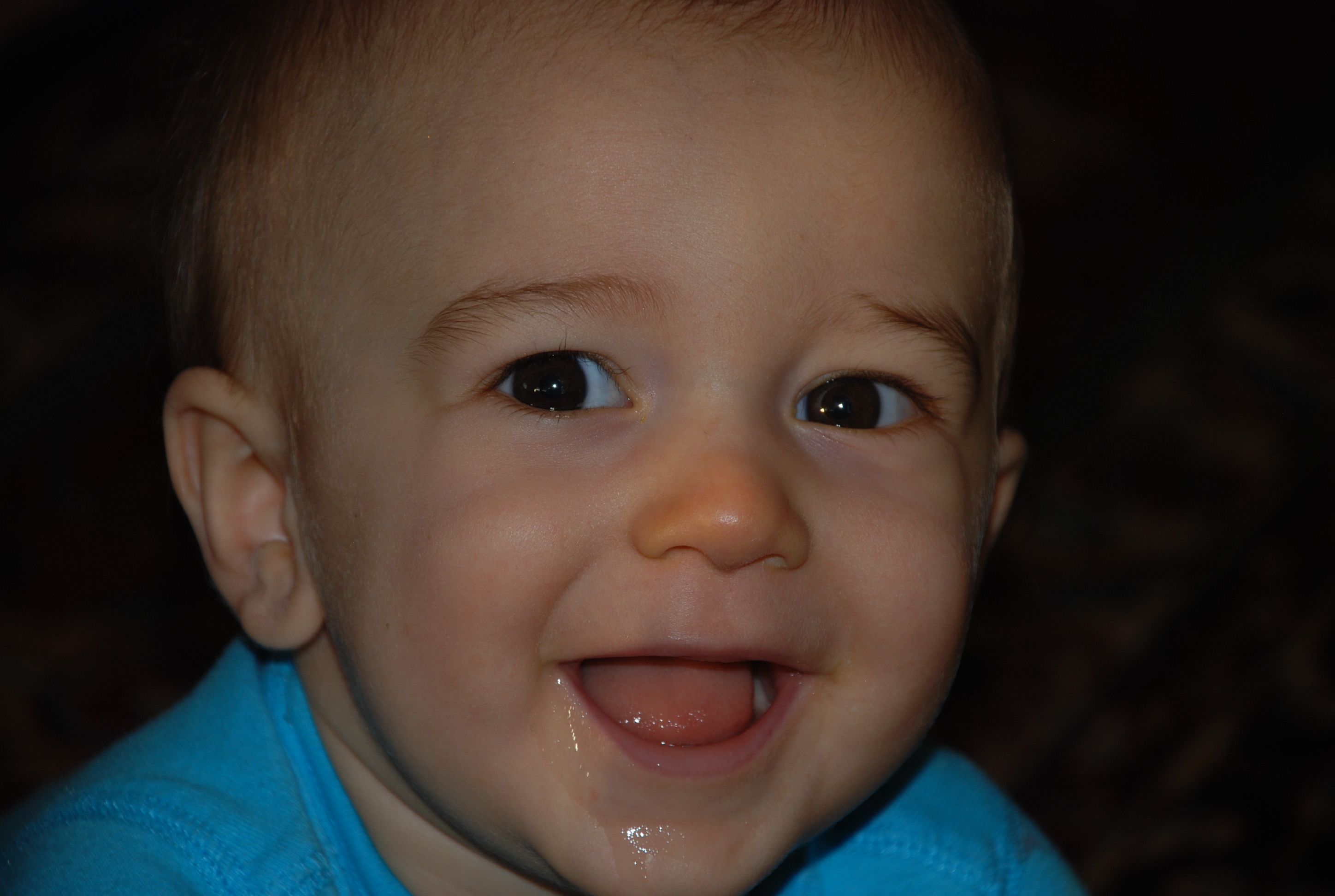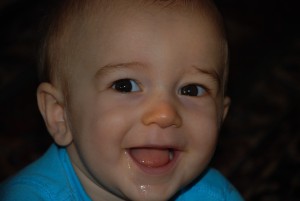The following are some of the sleep problems that Edwin had, how I diagnosed them, and what finally solved the problem. (Please note that I am not a doctor or certified sleep trainer, just a mother who did a lot of research and has experience with sleep issues.) If you or one of your loved ones is struggling with a baby who doesn’t sleep well, I hope some of these tips will work for you.
To read part one of this series on sleep, click over to Baby Sleep, 101. The introduction to both is at You Can Be A Baby Sleep Expert, Too.
Problem: Baby reverses day and night. Timeline: The first few weeks of life. Reason: When the baby was in the womb, he was more active during the night when the mother was still, and resting during the day, when the mother’s movements rocked him to sleep.
How I solved it: We took a family day trip on a sunny Sunday. Even though Edwin slept in the car, the sunlight pouring in through the windows all day began the process of righting his schedule. (Sunscreen required.)
Problem: Baby sleeps better when held by a parent. Timeline: Usually starts as a newborn, but can continue for many months. Reason: Baby craves the warmth and comfort of the womb; also may have trouble sleeping on her back, where we parents are required to place her in the crib or cradle, and is more comfortable being held on her side.
How I solved it: I didn’t fight it. I (or another family member) held Edwin for nearly all of his naps for the first several months. I also bed-shared with him for part of the night until he was eight months old. It was worth it for me, because Edwin and I both got more sleep than we otherwise would have, and I was still able to be productive while he napped, typing out my novel on my laptop over his head. By the time he was ready to be a more independent sleeper, he could roll over with no problem, so he started off on his stomach in the crib, which helped him to sleep longer. If holding the baby doesn’t work for you, try a swing or a baby hammock, or placing her in a baby carrier. Even putting the baby in a smaller cradle will help. All have the same cradling effect, but are less time-consuming for the caregiver.
Problem: Baby seems to sleep and nap sporadically and unpredictably. Timeline: Growing out of newborn phase. Reason: Parents haven’t learned the baby’s sleep cues or started to enforce a schedule.
How I solved it: By studying Edwin, I learned his “tired cues.” Yawning was NOT one of them- he’s an after-nap yawner. Eye rubbing was a big one, and so was slowing down in play. Whenever I saw these cues, I immediately enforced them by giving him his pacifier, reading a book, and rocking him. He usually went to sleep quickly, but if I “missed the window,” I’d have to wait until his next tired phase. I wrote down when he slept and napped each day for several weeks, and slowly a pattern emerged. At that point, I was able to tweak the pattern until we had a hour-long window of time when a nap could begin in the morning, afternoon and evening. That window eventually shortened until he was going down for a nap about the same times every day.
Problem: Baby resists a set bedtime and sometimes takes hours to get to sleep at night. Timeline: Growing out of newborn phase. Reason: Baby hasn’t yet learned the cues that mean it’s time for nighttime sleep.
How I solved it: Routine, routine, routine. You can start this even during the newborn phase, though it may still take awhile for the baby to learn. Create consistent cues that tell the baby what happens next. We always follow the same pattern: a short massage with baby lotion, then pajamas, then reading books, then nursing, and then a special song with rocking, and finally placing Edwin in bed tired but not asleep. At this point, Edwin knows exactly what happens next. He seems to love the routine, and doesn’t fight going to sleep anymore.
Problem: Baby doesn’t sleep long enough at night. Timeline: Any time. Reason: The baby isn’t going through enough sleep cycles during the night.
How I solved it: This one may surprise you, but there is a lot of evidence to support it: Put the baby to bed EARLIER. A sleep expert I interviewed for an article told me that the typical window for babies is between 6 and 7 at night. Wow, right? (Adult dinnertime, SCORE!) I recently proved this yet again, as Edwin was waking up at 5:00 every morning, and that was too early for me. Even though all my instincts said to put him to bed later, I decided to try the early technique. I backed his bedtime up by 15 minutes, and lo and behold, he started sleeping 15-30 minutes LATER in the morning. Now he’s getting more sleep, and I don’t have to get up so early. The extra sleep didn’t even shorten his daytime naps.
Problem: Baby can’t seem to go to sleep on her own; wakes up and cries as soon as you place her in the crib; wakes in the middle of the night and can’t get herself back to sleep; wakes without needing to eat. Timeline: Any time, even toddler-age. Reason: Baby hasn’t learned to self-soothe.
How I solved it: This was the big one. I struggled with it for months, because I was only getting to sleep a few hours at a time at best, but I wasn’t willing to let Edwin cry it out. I tried the gentler, more gradual methods outlined in Elizabeth Pantley’s No-Cry Sleep Solution, but they didn’t work for us. (I still recommend her book, though, as it taught me a lot about sleep cycles. Her Nap Solution book was even more helpful.) I finally did the research on Dr. Ferber’s “cry it out,” and while I still didn’t like the method (as I wrote about in this post), I understood his two main points:
1. A baby who wakes frequently during the night needs to learn to self-soothe, or the parent AND baby will NEVER get enough sleep (this is still a problem for many toddlers and their parents). This is a skill that usually needs to be taught. Babies can learn it without sleep training, but it can take a long, long time.
2. If you rock your baby to sleep and put him down, when he wakes, he will not understand why he isn’t still rocking with Mommy. He will notice that he’s now motionless and by himself, and that will wake him up fully. Babies need to go to sleep under the same conditions that they will wake up, keeping in mind that they go through several light sleep phases during the night when they are partially aware of their surroundings. That’s why Edwin was crying when he woke; he didn’t understand why his surroundings were different from when he fell asleep, and he craved those same conditions to fall asleep again.
The Ferber method worked for Edwin at 9 1/2 months. It worked so well that he was able to put himself back to sleep without crying within just a few days. However, I wouldn’t go back and do it sooner, for two reasons. One, I wasn’t ready, emotionally, to separate from Edwin; two, he had only recently stopped needing a night feeding, though I’d often give him one just to get him back to sleep. Because of this, he was able to sleep right through the night immediately, and I didn’t have to wonder whether he was waking up to eat.
Problem: Baby only takes short naps, 35-50 minutes. Timeline: Any time; regressions can occur even after problem has been solved. Reason: Baby only goes through one sleep cycle, and can’t bridge the gap to the next one.
How I solved it: I had to solve this one twice, once around 6 or 7 months, and once just last week. Edwin would wake up from each nap after 45 minutes exactly, but it was clear after a few days of this that he needed more sleep than that; he was cranky and overtired. I focused my energy on getting him accustomed to a longer nap again. First, I spent a few days holding him during his naps. I put him down in the crib as usual, and at around 40 minutes, picked him up asleep, and rocked him through the wakeful phase. After a few days, he was fidgeting less during that time, and I could see it was working. Next I put him in the crib for the entire nap, but sneaked into his room, again at around 40 minutes, and rubbed his back if needed. It’s only taken a week or so, but he’s already back on track for naps that last from 70 to 95 minutes.
Did this post help you with any of your child’s sleep problems? Do you have a sleep issue that I didn’t address in this post or Baby Sleep, 101? If so, post a question in the comment box, and I’ll do my best to answer it!
If you think the information in this post is useful, please share with other parents. I know there are a lot of parents out there struggling with the same issues I did, and I’d like to give them the benefit of my experiences.
A rested Edwin is a happy Edwin!
(Photo credit: Donna Sowul)



This is incredibly specific and helpful advice–the best I’ve read anywhere!